The Hope Project.

Volume 1: Issue 01 Feb 2024
The Hope Project is a youth-led non-profit organization founded in 2023 with the mission to break the stigma surroundingmentalhealthinruralIndia.
The magazine was founded by individuals who believe that print is still alive and recognized a gap in design and mental health magazines. Our vision is to focus the magazine on open discussions, some of which may be anonymized for the comfort of the writers. We aim to amplify the loud voices in our heads, ensuring that they are heard and seen. Through this, we hope to bring comfort and remind everyone that they are not alone in theirjourneyoflife.
We
are
here to share the load.



CONTENTS. Interview With Ally Zlatar- Mental Health Advocate & Artist ...................................................03 The Writer’s Prayer- Ria Nouri ...............................................................................................09 Decoding PTSD to some degree ...........................................................................................11 NORMAL?..............................................................................................................................13 Teentalk........................................... ....................................16 The Handwritten Letter Project...............................................................................................20 Book Review- Aysha...............................................................................................................22 Viva La Vida....................................... ..................................24 @__thehopeproject__thehopeproject2023@gmail.comH.O.P.E Grief Is Just Love With No Place To Go.................................................................................26
Q.Art often sparks conversation - if your artworks could initiate a conversation with the world, What essential messages or dialogues do you hope they would prompt especially considering mental health and the artist’s journey?
If my artworks could initiate a conversation with the world, I hope they would encourage more meaningful dialogues with healthcare practitioners. Mental health discussions should be centered on the individual's unique experiences and needs, fostering a collaborative approach to treatment and support. We must move away from tokenizing patients and instead, treat them as active participants in their care. Secondly, my art seeks to challenge the misconception that being unwell means one is unable to contribute to society. On the contrary, individuals facing mental health challenges possess valuable perspectives and talents that can drive positive change. Art is not merely an accessory but can stand at the forefront of our efforts to create a more empathetic and inclusive world.
Creating
art therapeutic tool, delve into, confront, process the emotions were coursing

03 | FEB 2024HOPE
Q. Art can be a powerful tool for social change how do you envision the starving artist foundation influencing societal perceptions mental health and challenging stereotypes surroundingartistsandmentalwellbeing?
I definitely agree, when I started The Starving Artist in 2017, it aimed to be a dynamic initiative at the intersection of art, activism, and academia, dedicated to empowering individuals through creative expression while challenging societal perceptions and stereotypes surrounding artists' mental wellbeing. Our approach prioritizes authentic and vulnerable engagement, encouraging individuals to explore their own experiences and creatively express them. We champion emerging voices from the creative arts and provide a platform for collaboration and transformation, covering diverse topics such as mental well-being, eating disorders, women's rights, migrant experiences, and climate anxiety through exhibitions, publications, workshops, and more. What is incredibly important to us is that we offer diverse support and platforms such as reflection cards to support better mental and emotional well-being and invite individuals to participate in open calls and explore our exhibitions. The Starving Artist continues to try to highlight the neglected voices and conversationsthroughthepowerofcreativevoices.
Q. Your journey has been marked by remarkable vulnerability. How do you balance being open about your experiences while also preserving a sense of privacy and personalboundaryinthepubliceye?
For myself, I still struggle with this as I often pour my heart out, but by prioritise what stories/art is most important to share that align with my mission and purpose. I also strive to take time to reflect on my motives before opening up. Clear boundaries help protect my emotional well-being, ensuring some aspects remain private. Also, it is incredibly cliche but regular self-care and support from trusted individuals aid in managing the emotional impact of sharing. Another way is to always find and gravitate to sharing your voice in safe spaces. When feeling and sharing vulnerable aspects of ourselves it makes it so muchmoresupportiveandeasier.

Q. You’ve emphasized the intersection of mental health with other aspects of life- could you give your perspective on how race, gender and socioeconomic factors intersect withmentalhealthandartisticexpression?
became my tool, a means to confront, and emotions that
through me.
The intersection of mental health with race, gender, and socioeconomic factors is a complex and multifaceted landscape that deeply influences artistic expression and personal experiences. Take my own experience, I come from a traditional Eastern European family that was displaced from Yugoslavia, and this has profoundly shaped my experience with eating disorders. Issues of identity, belonging,andhowmycultureviewsfoodandgenderroles have all played a significant role in my journey. In contrast, someone from a different cultural background, family dynamics, and a unique intersection of health challenges, such as alcoholism or diabetes, may have a completely different experience with eating disorders/ mental illnesses atlarge.
Each individual's journey to me is akin to a unique pizza, with distinct bases, sauces, and toppings. Our individuality stems from the varied bases, representing our upbringings, the sauces, symbolizing our unique psychological makeup, and the toppings, signifying our personalities and life experiences. Just as pizzas bake and simmer at different temperatures, our life journeys unfold in diverse ways, influencedbytheintricateblendofthesefactors.
coursing
2024HOPE | 03

Ally Zlatar, artist and founder of The Starving Artist, utilizes her creative eating disorders through initiatives like The Starving Artist Scholarship Fund. delves into migrant experiences, fostering global understanding through art.
05 | FEB 2024HOPE

voice to advocate for change, addressing issues such as Fund. Her impactful "This Body of Mine" campaign
I WAS BLIND TO MY ILLNESS
art. 2024HOPE | 06

07 | FEB 2024HOPE

2024HOPE | 08
To God, who reads this over my shoulder.
I pray with every fibre that is within me,
In every sliver of light that you are kind enough to bestow, Just for a drop of honeyed relief.
I know You’ve heard my sorrows and plights, Even when my tongue refuses to speak. Even if the Earth caves in, its soil begging to bury me, I cling blindly with both hands, clutching at air, fistfuls of the mist You veil livelihood with.
the writer’s prayer
~Ria Nouri
Every moment becomes eternity, And still, the heart soars with a wildness, like how the flightless bird is not wingless, and the dancer dies twice, still, eagerly we wait for when the clouds cry out in jubilance, “God has mercy!”
The heavens open with the pretty pittering of angels’ feet, and steam from the chariot of sweet-smelling blessings. Sometimes, I can almost taste its fragrance, and so I testify myself before You.

Oh, God, who reads over my shoulder, What I really mean to say, I ask for more ink to write to You with, be it my own blood, sweat or tears.
09 | FEB 2024HOPE

tears.
2024HOPE | 10
~Art by Sadia
DECODING PTSD
Ever scrolled through social media and noticed all those posts tossing around words like 'trauma' and 'PTSD'? Let's dive into what they really mean and how to navigatethisoftenmisunderstoodtopic.
So, what's up with PTSD? It's not just some trendy term – it's a real thing affecting real people. Forget the typical stressors, we're talking about heavy stuff – war, assault, abuse, and major accidents.
Not everyone coming out of tough times ends up with PTSD. For many, things settle down over time, but for some, it feels like being stuck in a constant state of alertness. That's when you might step into the PTSD zone, dealing with intrusive memories, avoiding anything that triggers the trauma, feeling negative all the time, andbeingonedge.
Let's talk about seeking help: It's not about labeling yourself. PTSD is tough, but it's not your entire identity. Reach out to someone who gets it – maybe your primary care doctor or a mental health specialist. They can guide you to a therapist or psychiatrist. Don't have insurance?
Breaking down the facts to some degree
No problem. Community mental health clinics or federally qualified health centresgotyourback.
If you get that diagnosis, it's not the end of the road. There are ways to tackle it. Psychotherapy is a game-changer, helping you process memories, shake off guilt and shame, and reclaim normal life. Plus, there are some tech solutions like AI-enhanced mixedreality,lettingyoufaceyourfearswith atherapistbyyourside.
Medications such as anti-depressants can lend a hand too –. And don't overlook lifestyle changes – from tweaking your diet to embracing mindfulness and exercise, they can play a big role in bouncingback.
The bottom line is, you don't have to go through it alone. There's a path forward, and many have triumphed over their struggles.So,let'sditchthemisinformation, get real about PTSD, and support each otherthroughitall.

11 | FEB 2024HOPE
DECODING
 Art by Nivesh
Art by Nivesh
2024HOPE | 12
Why suddenly burnt out? Can I go back to how i was before? These were the questions that echoed through my mind when I approached my school counselor, just a month before the dreaded board exams – the exams that would determine my entire future. From a young age, I was labeled as a high achiever, expected to act, talk, and walk in a way distinct from my classmates. This expectation ingrained in me a tendency to never say no, especially to teachers. However, when Grade 12 arrived, and everyone anticipated my peak performance, I reached my breaking point.
The machine in me, once relentless in pursuit of perfection, ground to a halt. I found myself taking absences, unable to face people, and even resenting the presence of others within five feet of me. The irony wasn't lost on me – the perpetual people-pleaser now yearning to escape from everyone. When my counselor called me to discuss my progress over the mock exams, she noticed the change. Teachers remarked that I wasn't the same suck-up who never complained. Instead, I took time off for myself. It was a pivotal moment when I confessed, "I THINK I AM GOING THROUGH A BURNOUT."
Her gasp mirrored my own disbelief. "You?" she asked. I nodded. She probed further, questioning why now, just when the pressure to excel was at its peak – to make the school, my family, and myself proud. Could I go back to normal? I couldn't help but ponder these questions. Could I return to the relentless pursuit of perfection that ledmetothisbreakingpoint?
As I grappled with her inquiries, I realized there was no going back to normal. Normal had been the source of my suffering, the catalyst for my burnout. The world seemed to shut its doors on me during that time. Getting out of bed felt like an insurmountable task. Studying the same answers I'd revised countless times became unbearable. Why was I sacrificing my wellbeing for a single grade, a college acceptance, a red ink comment?
When the exams finally ended, there was disappointment from others, and some were just glad I didn't get ahead of them. But within me, there was a sense of liberation because I was still a kid going through the world for the first time. The effects of the burnout lingered, but I realized I couldn't go back to who I was before. Normal wasn't me. Now in my first year of university, I'm discovering a new normal –one defined by self-care, self-compassion, and self-acceptance. And maybe, just maybe, that's enough.

NORM
~ tired pen 13 | FEB 2024
NORMAL?

HOPE | 14
Art By Guzala
 Art By Guzala
Art By Guzala
14 | FEB 2024

Just as white space in design allows your eye to focus on what’s most important, the same holds true in life.
HOPE | 15
Teentalk.
Nestled in moves at revolution is not merely about addressing misunderstanding mental health. mentalhealth asepisodes exorcismas health, as stigma. During Handing students to anonymously. evident in bowed heads. fearing judgment facilitators. remarkable
As the students floodgatehad was filled emotions. family troubles dreams deferred poignant glimpse overshadowed Following accomplishment. merely spreading with a professor The professor's responsibility especially chord. What with in return struggles?
16 | FEB 2024HOPE
in the heart of rural India, where life at its own pace, there's a quiet revolutionbrewing–TeenTalk.Thisinitiative merely about spreading awareness but addressing a pressing need: the misunderstanding and stigma surrounding health. In these rural communities, healthillnessesareoftenmisconstrued episodesofpossession,leadingtorelianceon astheprimaryreliefsystem.Mental as a whole, remains shrouded in During one of our earliest sessions, out post-it notes, we encouraged to jot down their anxious thoughts anonymously.Initially,thestudentshesitated, in their puzzled expressions and heads. They seemed wary, perhaps judgment from their peers or us, the facilitators. But gradually, something remarkable unfolded.
students began to write, it was as if a hadbeenopened.Post-itafterpost-it with heartfelt confessions and raw emotions. They shared everything – from troubles to financial struggles, from deferred to daily hardships. It was a glimpse into their world, one often overshadowedbysocietalmisconceptions.
ollowingthesession,ourteamfeltasenseof accomplishment. We had believed we were spreading awareness, but a lecture professor prompted deeper reflection. professor's question about our responsibility in collecting information, from vulnerable children, struck a What were we going to leave them return for their insights into their struggles?
Later,asIsatathome,sortingthroughthe pile of Post-it notes, the weight of that questionlingered.Eachnotewasawindow into the soul of a student, a testament to theirresilienceandvulnerability.Itbecame evident that what these kids needed most wassomeonetolisten,notmerelytohear.It dawned on me that Teen Talk was more thananawarenesscampaign;itwasabout changing perceptions and fostering empathy.Itwasn'taboutthenumbersbut rather the individualstoriesbehindthem. It was about creating a community where everyvoicemattered.
Ievenponderedwhetherthissimpleactcould indeed"changetheworld."Butthen,itstruck me that listening is an act of love. And when love is put out into the world, it becomes contagious.It'swhatsparkshopeafterall.
2024HOPE | 17
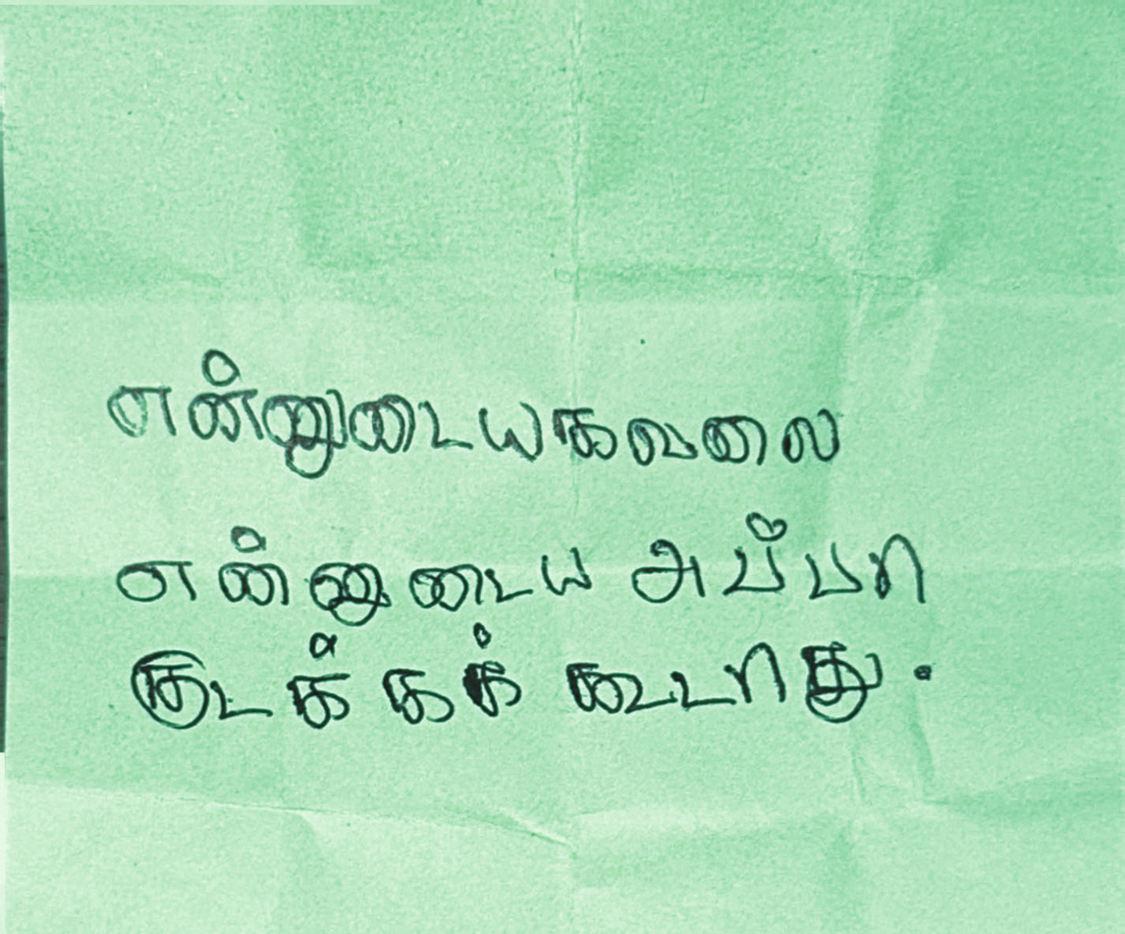




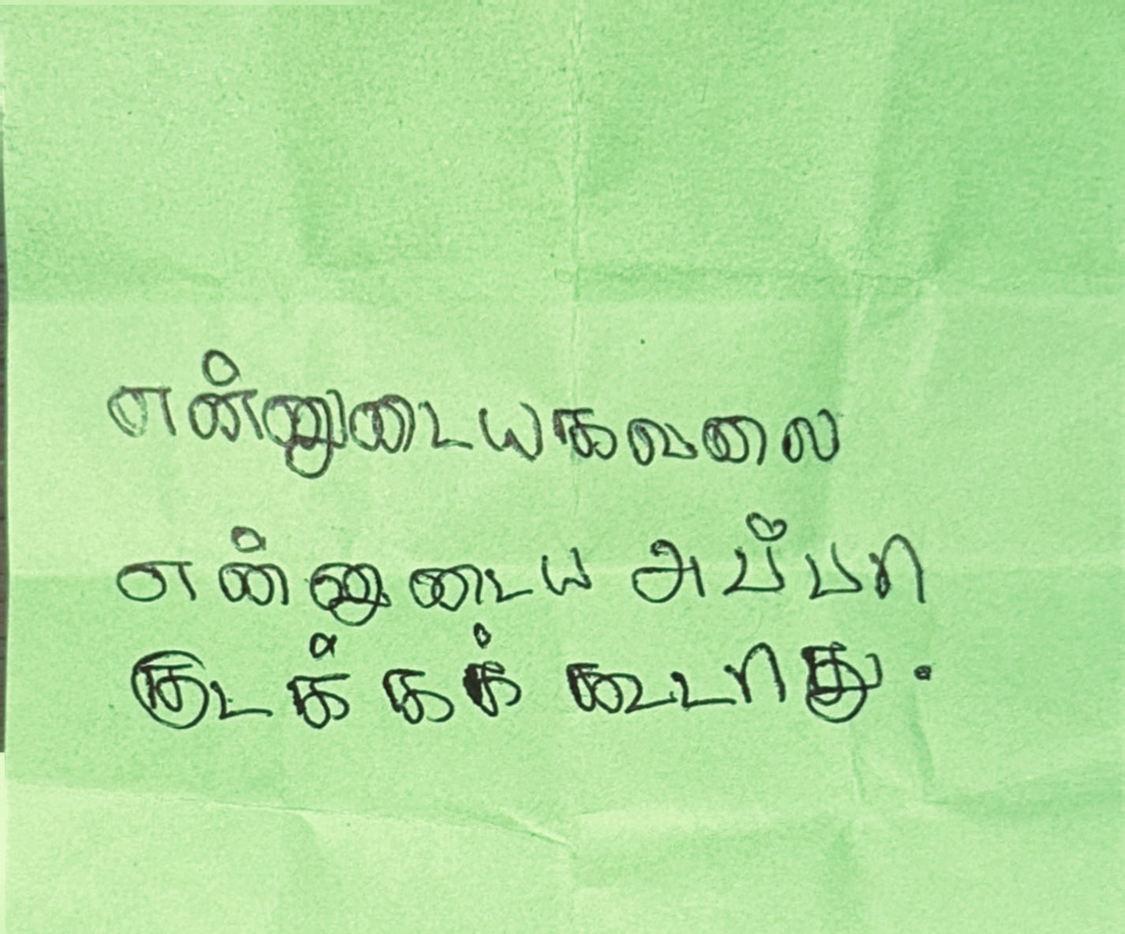

18 | FEB 2024HOPE

In my home, we face problems in debt
I feel anxious whenever my father comes back home drunk

My worry is the violence that alcoholism leads to in this world.
Our mid-day meal system isn’t good
Our school roof’s leaks
2024HOPE | 19
The Handwritten Letter Project: Inspired by Craig Eldham's initiative, our magazine presents a space for anonymous letters from teenagers and youth.
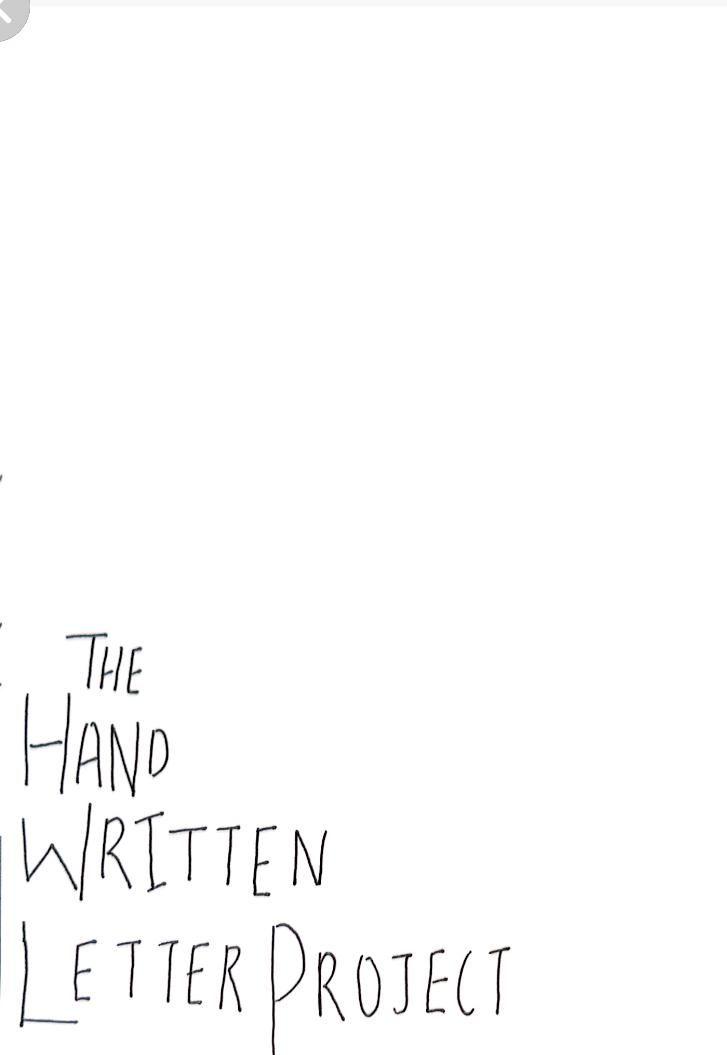
20 | FEB 2024HOPE


2024HOPE | 21
“Your Second Life Begins When You Realize You Only Have
Raphaelle Giordano is a charming and feel-good novel of one journey from boredom to dissatisfaction to self confidence contentment, with lessons to take away and practise. The story aroundthelifeofCamille,aParisianwomaninherearlythirtieswho to have it all - a loving husband, a secure job, and a comfortable However, beneath the surface, Camille feels unfulfilled and trapped mundane routine. Her dissatisfaction with life reaches a breaking prompting her to seek help in the most unexpected place - a encounterwithamysteriousandunconventionaltherapist,Claude.
Claude calls himself a routinalogist and shares some simple but important ideas with Camille to help her change. These ideas come from psychology and mindfulness and push her to find a new purpose in chase her dreams. As Camille starts her journey of self-discovery, makes you think about your own life and if there’s a way to find meaninginit
22 | FEB 2024HOPE
One”; by woman’s fidence and story revolves whoseems comfortable life. trapped in a breaking point, a chance Claude. important from positive in life and the book find more
Whatisacuteroutinitis?
In the book, Claude, the therapist, tellsCamilleshehas"acuteroutinitis" toexplainhowshe'sfeelingstuckina boring and unfulfilling routine. It's a wayofsayingthatherlifehasbecome toopredictableandlacksexcitement or purpose. Claude uses this term to motivateCamilletobreakawayfrom her daily habits, try new things, and find happiness and meaning in life. This idea of "acute routinitis" is a big part of the book's story, pushing Camille to discover more about herselfandgrowpersonally.
Howthisbookhasinfluencedmeandmylife:-
"Thisbookhasbroughthappinesstoovertwomillion readers, and I'm proud to say that I'm one of them. While reading this book, I found myself relating to Camille'slife.Icouldn'tseemtofiguremyselfout,andI genuinely disliked who I was. However, through readingthisbook,Idiscoveredanewsenseofpurpose in my life. I began to break free from a never-ending cycle and transitioned into a more positive and selfaware person. Change can be tough, but by taking small, gradual steps, we can find happiness in life. Currently,I'mimplementingsmallchangesinmylife thathavetransformedmeintoamoreoptimisticand self-aware individual. Often, we find ourselves on paths that aren't our own, making the wrong decisions. One valuable lesson I've learned is that it's okaytomakemistakesandeventofail.Now,Ibelieve thatfailureisasteppingstonetowardsprogress.While itcanbeembarrassing,andwemayfeelself-critical,it's crucial to understand that we are our own strongest supporters.So,enjoyyourselfandbehappywithwho you are. Learn from your mistakes and keep going. Don't look back and regret. The day you finally reach whereyouwanttobeisthedayyou'retrulyborn."
By Aysha
~ Aysha Nizamudeen
Q.
2024HOPE | 23
VIVA LAVID

24 | FEB 2024
Frida Kahlo, Watermelons, 1954
Magdalena Carmen Frida Kahlo y Calderón, known as Frida Kahlo, Renowned for her approximately 80 self-portraits, stands as an iconic figure in art history not only because of her paintings, but also because of her story: a story of independence, emancipation, freedom, andsuffering.
"I paint self-portraits because I am the person I know best. I paint my own reality. The only thing I know is that I paint because I need to and I paint whatever passes through my head without any consideration,"
~ Kahlo
In one of her notable works, "The Dream" (or "The Bed"), Kahlo delves into the theme of death. Portraying herself sleeping in a bed engulfedbyplantleaves,withaskeletonresting above adorned with similar foliage and explosives, the painting presents multiple interpretations. Some view the skeleton as a memento mori, while others interpret it as a representation of Judas Iscariot, often depicted as a paper-mâché skeleton set alight with fireworks on Mexico’s Holy Saturday. Despite the varied interpretations, Kahlo appears to be dreaming of death, symbolized by the bed floating through clouds and the unpredictable inevitabilityrepresentedbytheexplosives.
"They thought I was a surrealist. I never painted dreams. I painted my own reality," Kahlo explained, emphasizing the realism present in her paintings, including"TheDream."
Frida Kahlo’s life and artwork can serve as a resource for physicians who want to better comprehend the experience and dehumanizing consequences of pain. Her paintings are a medium to visualize pain and the effect of pain on the human condition.
AHowever, Kahlo's artistic repertoire extended beyondportraitstoincludearound30stilllifes. Despite being less well-known, these works hold significant meaning in her life. In his article"FridaKahlo'sStillLifes:'IPaintFlowers So They Will Not Die,'" Salomon Grimber explainsthatstilllifesareoftenmarginalizedin the hierarchy of art, trivialized due to their associationwiththedomesticsphere.However, for Kahlo, who spent much of her time houseboundduetophysicalinjuriesandillnesses,her still lifes serve as indicators of her internal and externalrealities,muchlikeherself-portraits.
A week before her death, Kahlo painted a vibrant still life of watermelons, inscribing "Viva la Vida" (long live life) into a centerpiece. Watermelon, a fruit symbolizing life and abundance due to its ability to thrive with minimal moisture and its seeds signifying new life, serves as a poignant metaphor. ConsideringKahlo'sbrusheswithdeath,froma debilitating 1925 car accident to ongoing suicidal ideations, "Viva La Vida" could be seen as ironic commentary on her life. In light of Kahlo's struggles with physical and mental health, her art becomes a testament to the power of creativity as a coping mechanism. It provided her with a means to express her innermost thoughts and emotions, offering solace and catharsis amidst her turbulent existence. Three years later, Kahlo's husband, Diego Rivera, also painted a still life of watermelons as his final work, further cementingtheenduringsymbolismofthecycle oflifeanddeathinKahlo'soeuvre.
Yet, among the many dozens of paintings in her body of artwork, Kahlo never painted the streetcar accident that wounded her teenage body.
VID
HOPE | 25
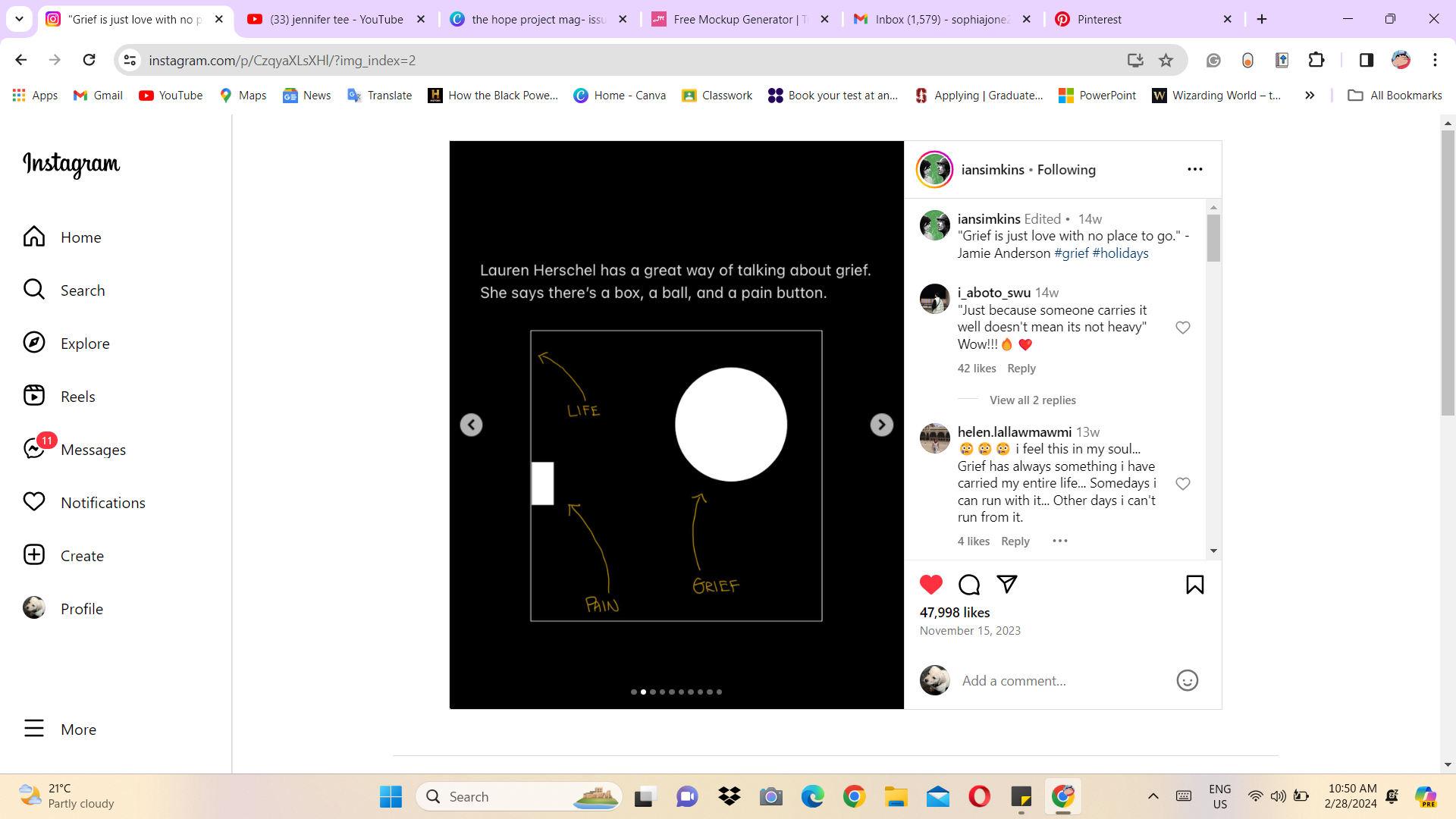






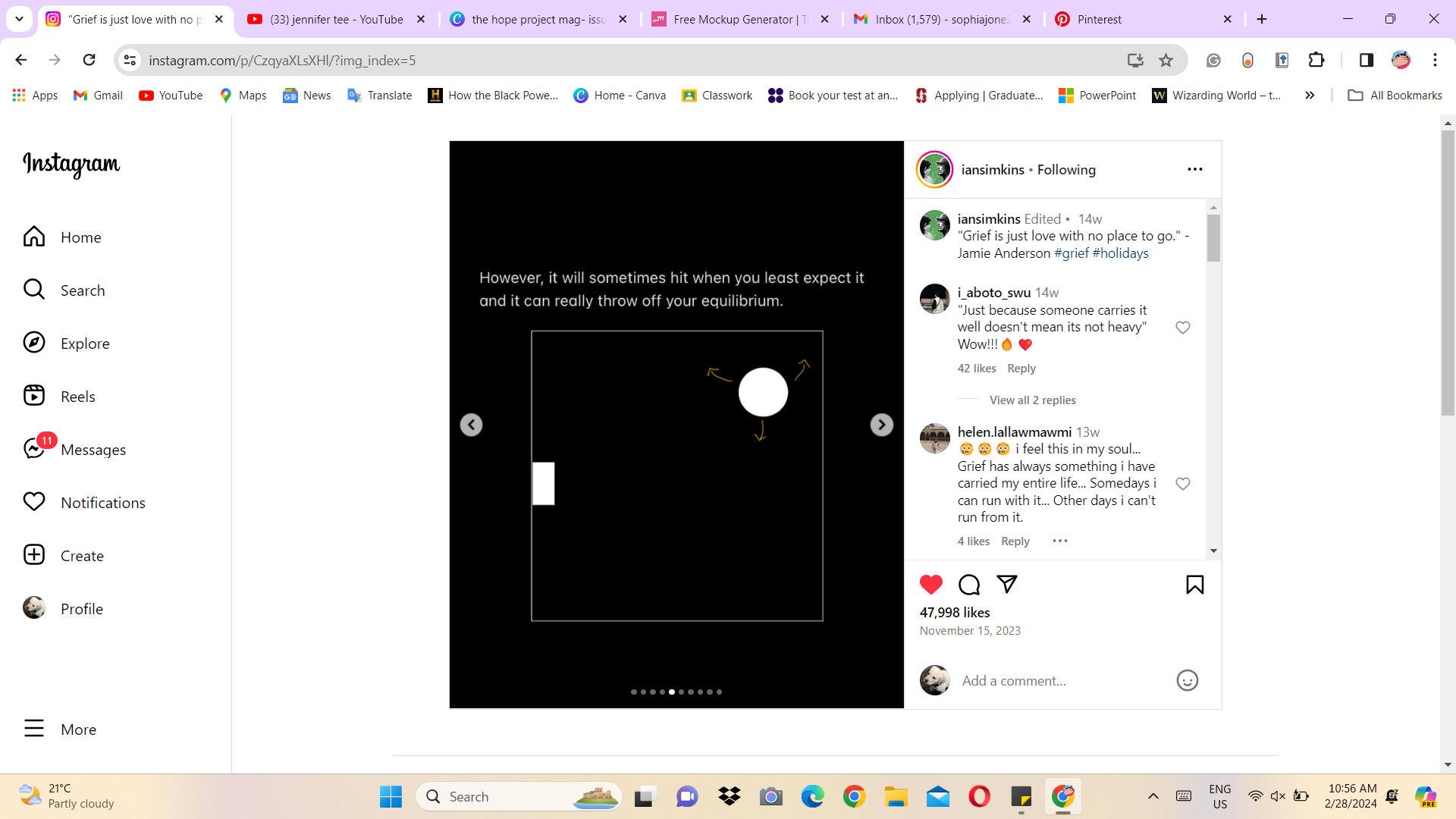
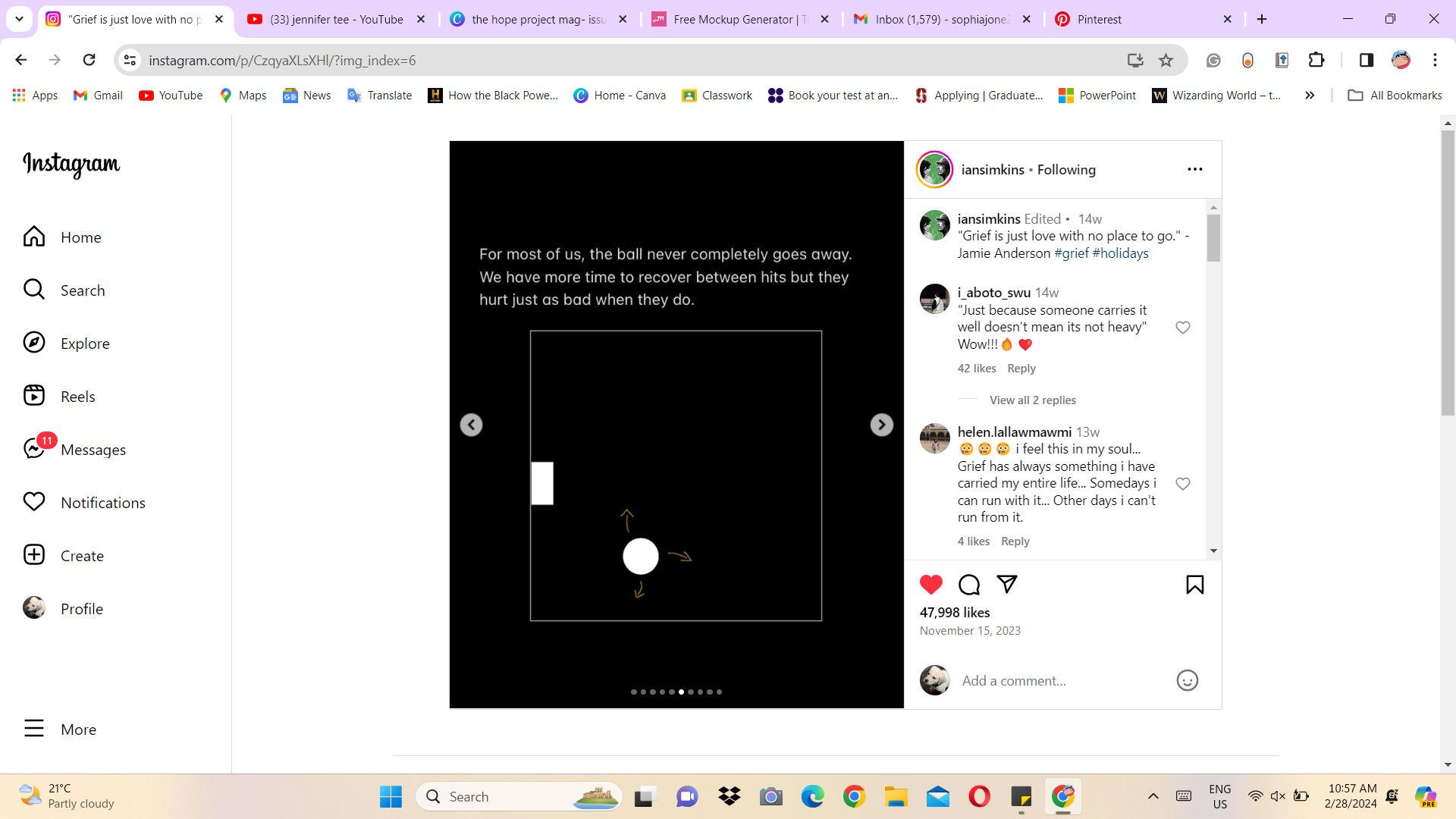















Shh, don't tell
Scan this QR code for exclusive access to our topsecret vault of cat memes and procrastination remedies.
We never lie... well, except maybe about having those procrastination remedies. If we did, this magazine would've hit the shelves in December! 28 | FEB 2024HOPE
anyone!
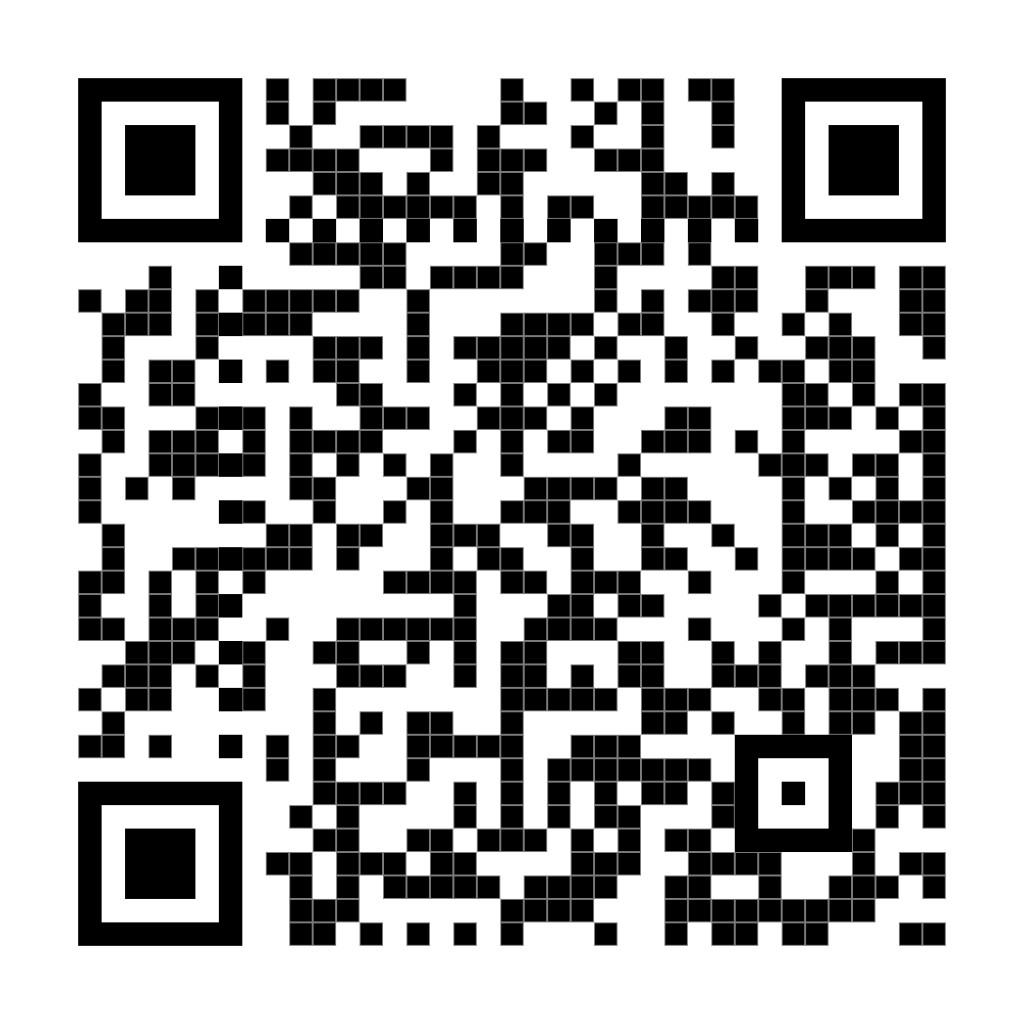
2024HOPE | 29

Editors:
Fathima Neferin
Sophia Jone

Yet I still dare to hope
from another point of view.
submit to be featured in our next issue!











 Art By Guzala
Art By Guzala


















